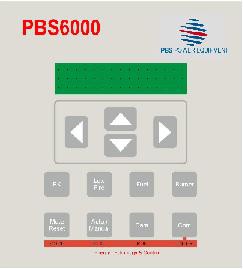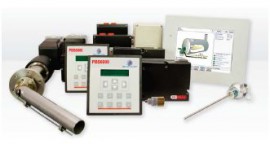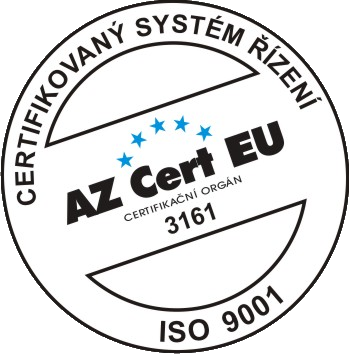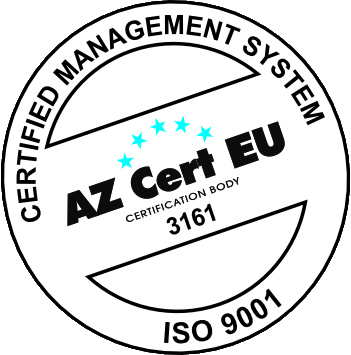
Burner controller
Burner controller
PBS6000
BASIC DESCRIPTION A FUNCTION OF CONTROLLER
The PBS6000 Series Burner Management System offers complete and flexible solutions to industrial burner users. Applications include steam and hot water boilers, oil heaters and process driers. The PBSC6000 controllers are suitable for use with single and dual fuel burners as well as with twin fired boilers.
Fuel prices and pressure to reduce CO2 emissions are prompting industrial boiler operators to look at ways of improving efficiency. If your boiler uses a conventional mechanical linkage control system then you are almost certainly wasting fuel. By installing an electronic Burner Management System savings of over 10% can be made in fuel usage, running costs and CO2 emissions.
Further efficiency improvements and cost savings can be made by adding Oxygen Trim and VSD control options. The PBS6000 replaces mechanical linkages and characterising cams with accurate and repeatable servo motors to position fuel and air drives. Up to four fuel:air profiles can be set for each burner in the safe knowledge that each time a profile is selected the servo motor positioning will be repeatable throughout the firing range. In each profil is min 3 points and max. 24 points. In each point is exactly set position of actuators. Automatic control or manual control of load. In the event of a burner system failure the burner will shutdown allowing the fault to be investigated and rectified.
A comprehensive range of ancillary devices allows complete Burner Management Systems to be configured. The PBS6000 is suitable for both single and multiple boiler applications. Where more than one boiler is used, PBS6000 controllers can be networked using RS-485 communications. The PBS6000 boiler sequencing utility enables up to four boilers to be sequenced.
Advantage of BURNER CONTROLLER PBS 6000
- Safety advantage
Improved safety performance meeting current and announced European safety standards
Employs self-checking sensors
- Design advantage
Integrated: Timing controls, flame supervision, gas valve proving, gas leak detection, fuel:air ratio control, modulation, O2 trim, variable speed fan/pump control, boiler sequencing, communications, and water level alarms/level control. Burner on/off and fuel selection have been integrated into the Product's display.
- Engineering advantage
A new flexibility makes these controls suitable for a range of burners from basic commercial burners to complex special process applications.
- Commercial advantage
Small size and full integration means that the control can be mounted on the burner or in a small cabinet.
The display can be shared on twin fired boilers.
CanBus interconnections result in simplified wiring and easy expansion.
Fuel savings can be achieved from the most basic control.
Lower prices mean shorter paybacks.
The life of the boiler plant is extended.
Controls and their displays can be customised and badged.
- Service advantage
As the commissioned data is stored in the display and in the control a technician can replace the control without the need to re-commission.
Internal data logging is available for performance, trending, emissions and event history.
- Advantage od electronic contol
On an electronic control, the low fire point can be set lower than the ignition point which means that the turn-down ratio can be increased and burner on/off cycles and their associated cold air purges reduced. Savings of 5 per cent have been reported on a burner that prior to conversion had an on/off frequency of approximately once every 10 minutes.
If a plant does not run continuously then a second modulation control setpoint can be used to switch the boiler to a lower steam pressure or hot water temperature during periods of reduced activity – savings approximately 10 per cent pa.
When oxygen trim is employed oxygen levels can be trimmed to their optimum level. This process automatically and continuously compensates for the variables that affect efficient combustion – savings approximately 3 per cent.
Some air dampers leak and even when fully closed the air flow can be significant. Combustion efficiency can be improved at low fire if the fan speed is reduced. By adding fan speed control burner turn-down can be increased further without compromising low fire efficiency, and additional fuel savings can be achieved. Also, when an inverter is used to slow the speed of an ac electric motor, electrical energy savings result. For example, when a fan motor is slowed to to half speed an 80 per cent electrical energy saving is achieved and emissions at the power generation plant reduced.
Electronic control facilitates direct driving of the fuel valves and air dampers resulting in no wear/backlash and on frequently modulating burners additional energy savings of up to 1 per cent are common.
Finally, boiler sequencing control enables the plant operator to achieve better utilisation through matching of boiler output to demand.
More efficient combustion in industrial burners conserves fuel, lowers emissions, reduces plant operating cost and prolongs the life of the boiler plant.
Base of controller:
Servomotor 20Nm PBS6028
Sensors:
Gas pressure sensor 0 - 600 m bar PBS1021
OUTPUT REGULATION
APPROVALS
Controller 210 x 125 x 80mm deep




